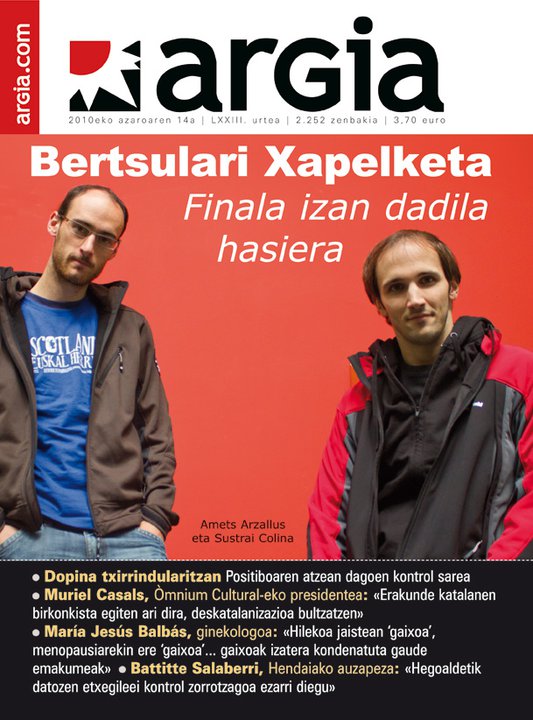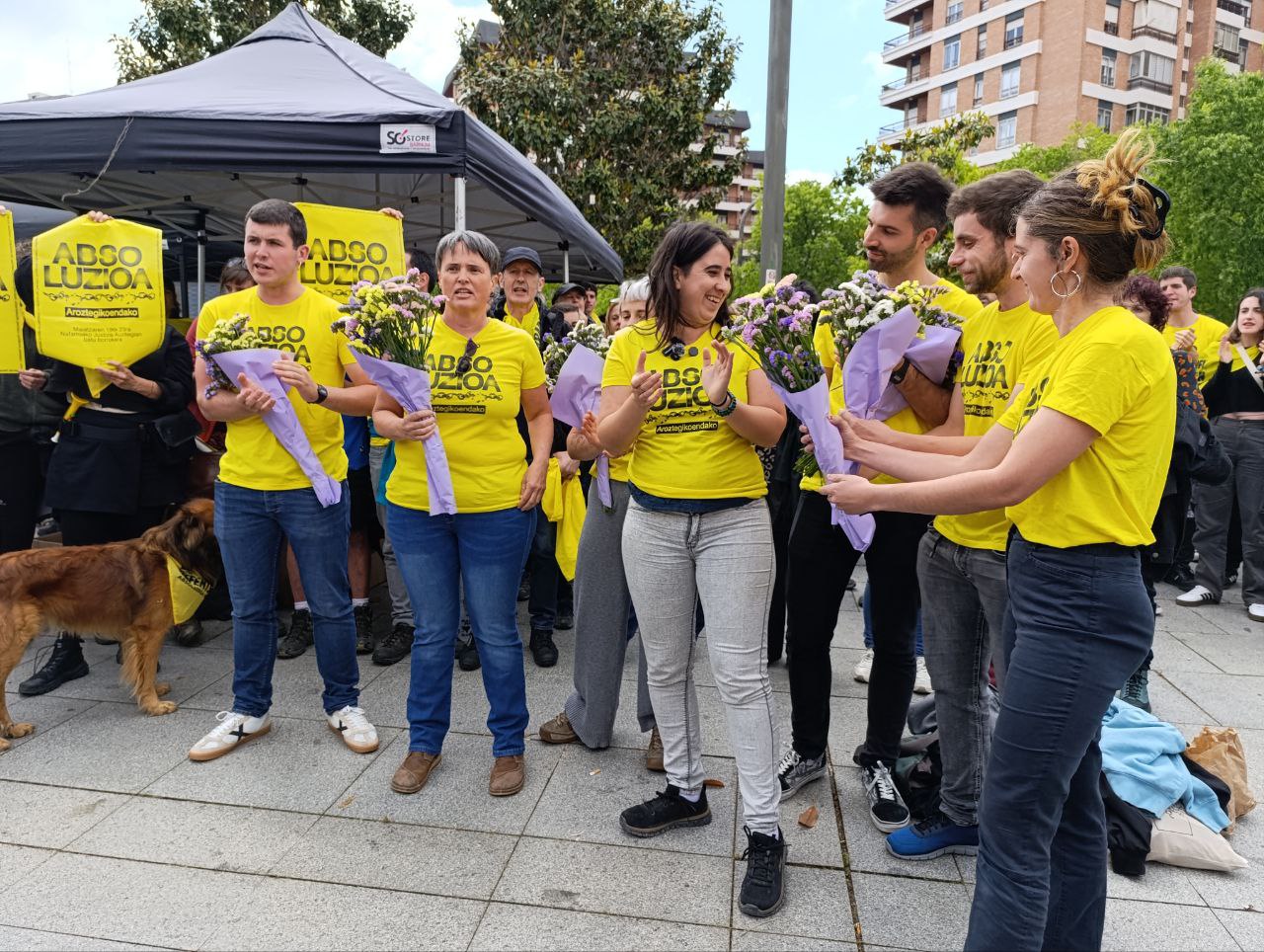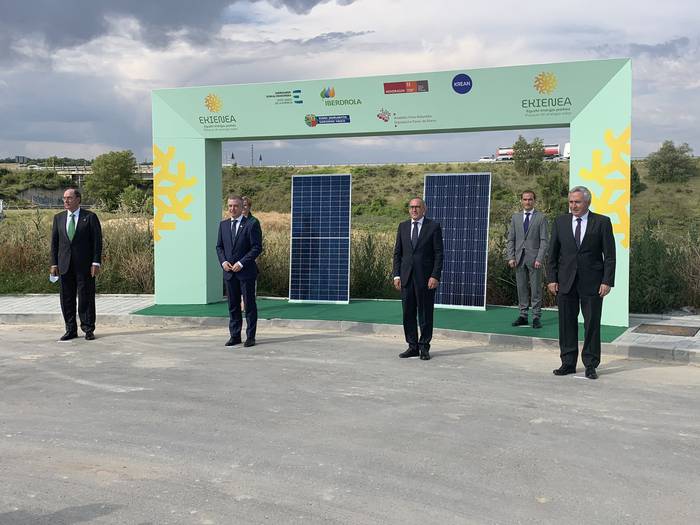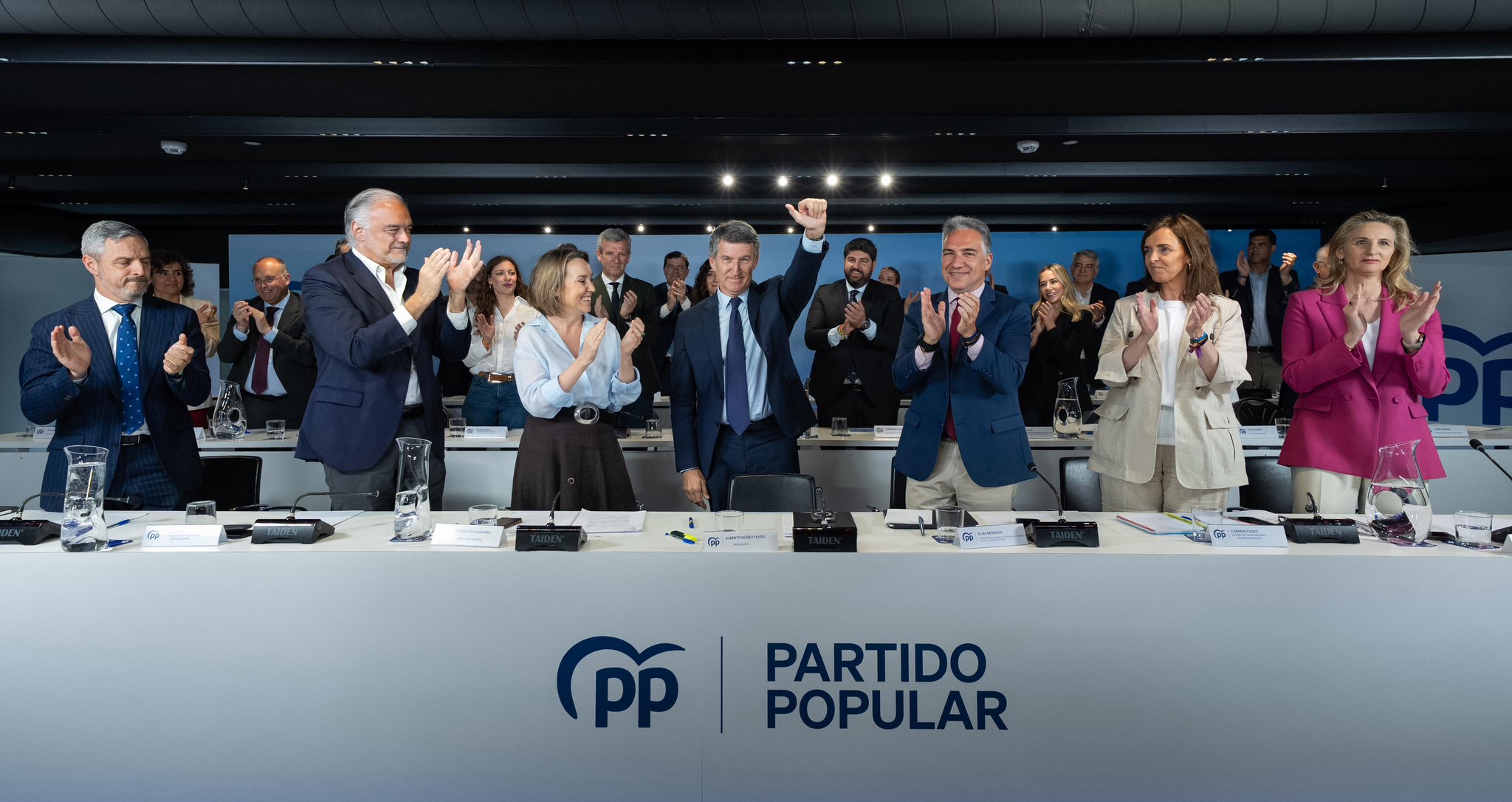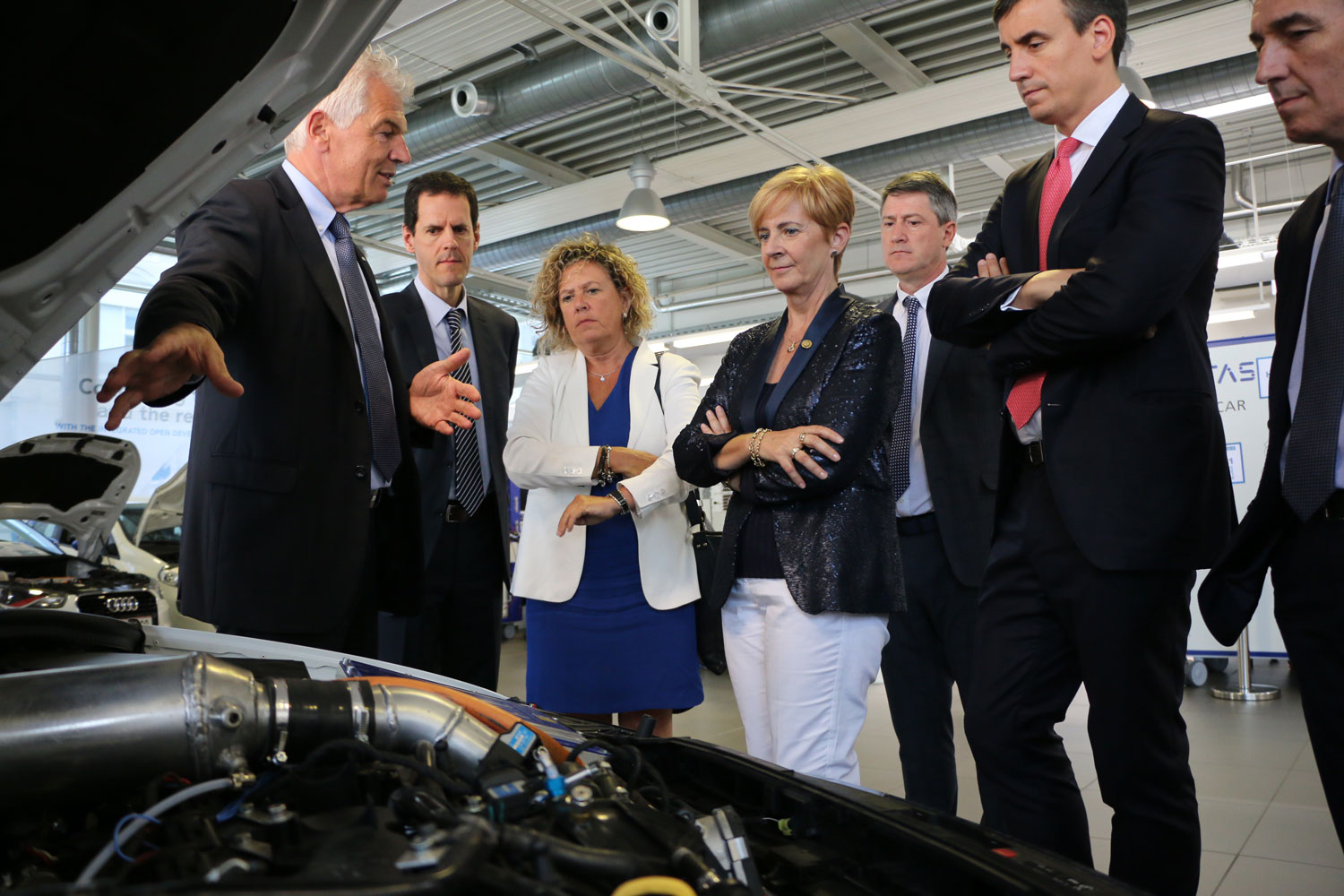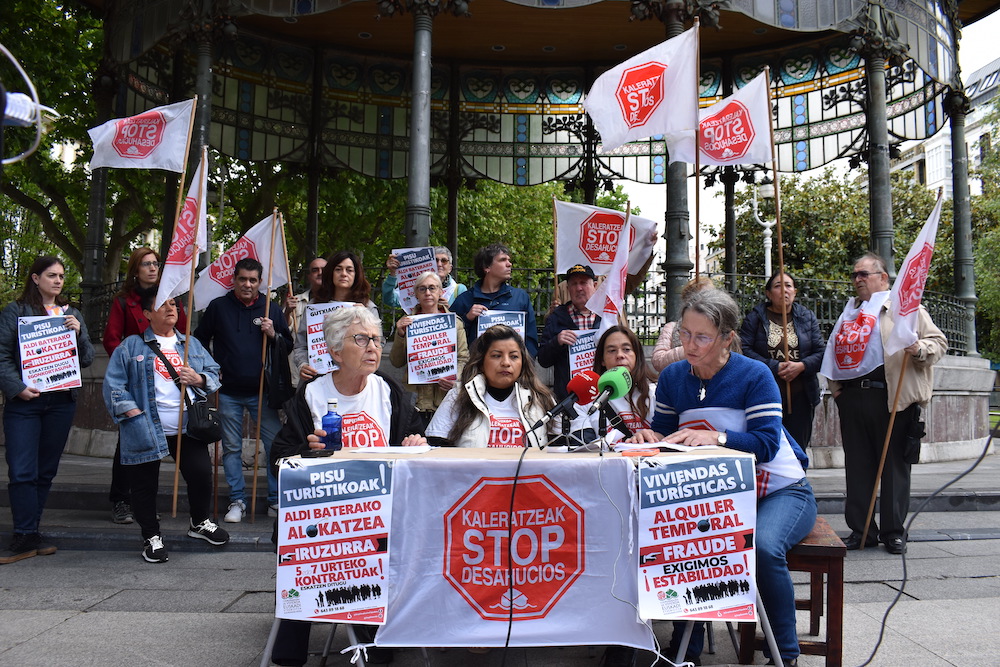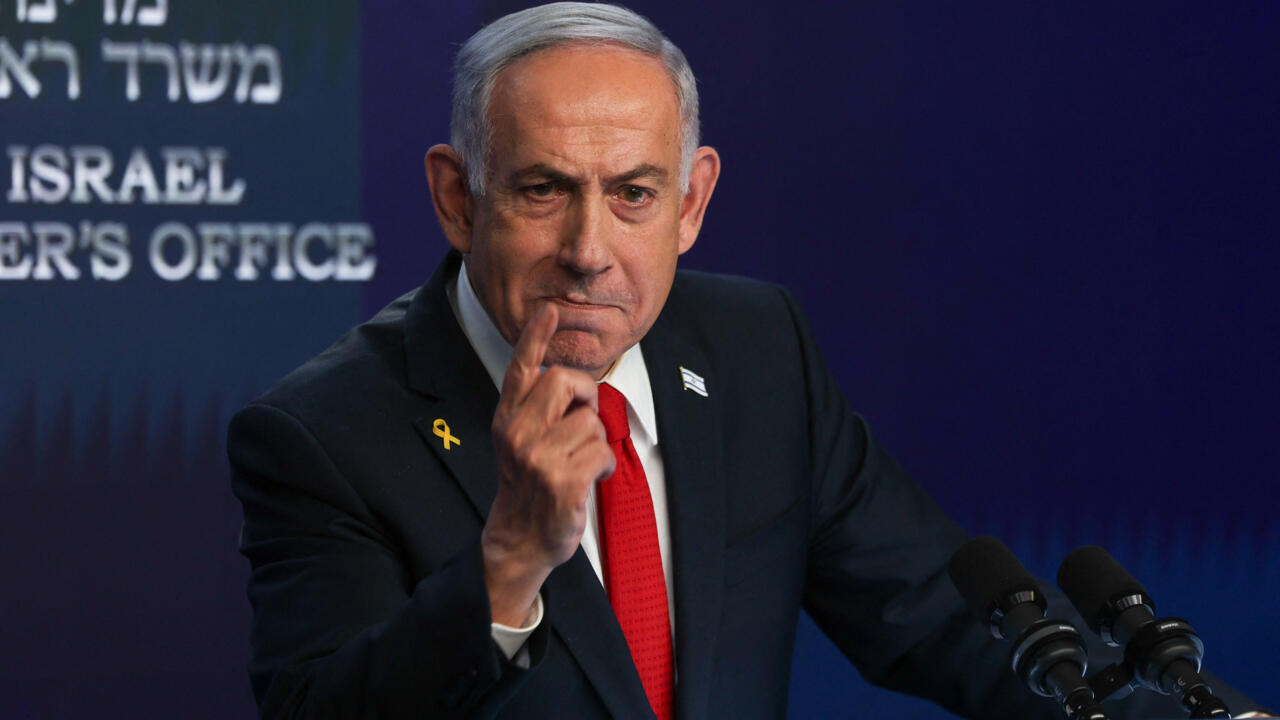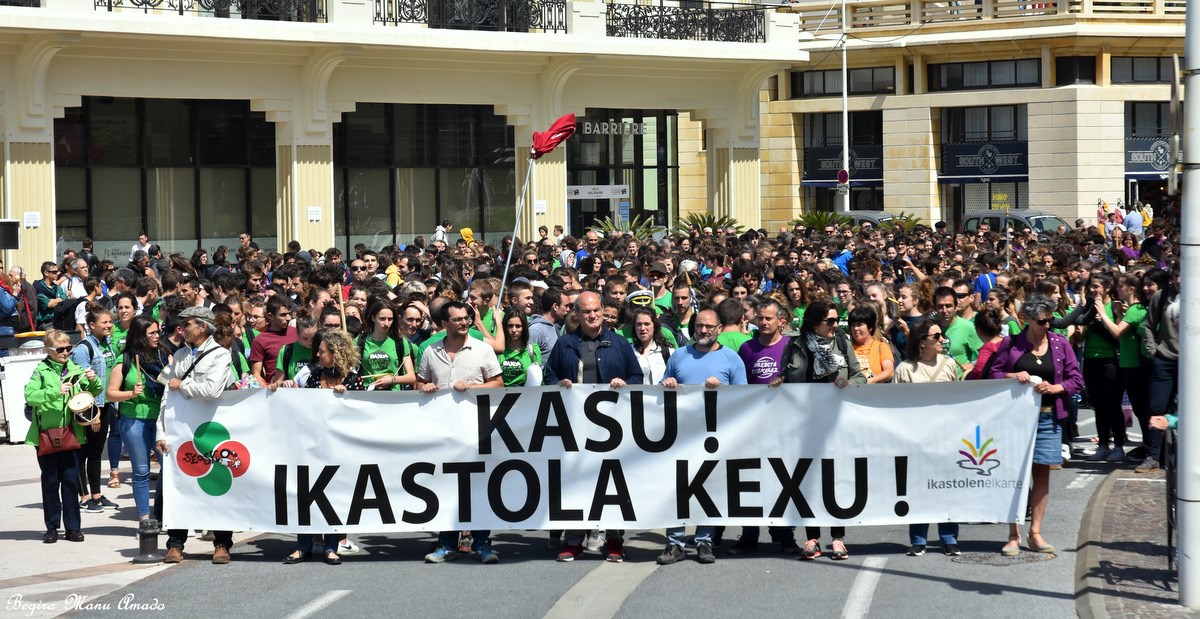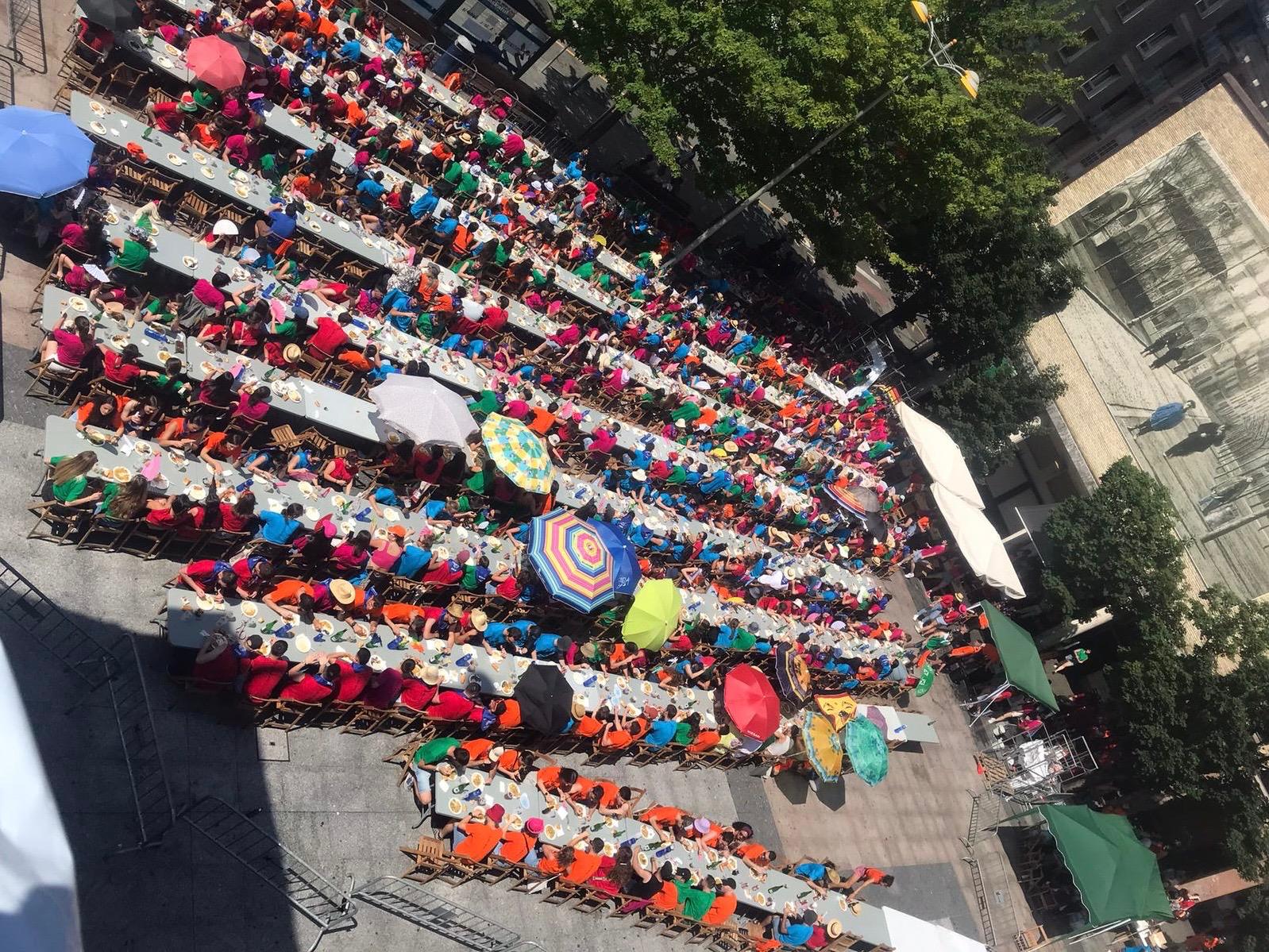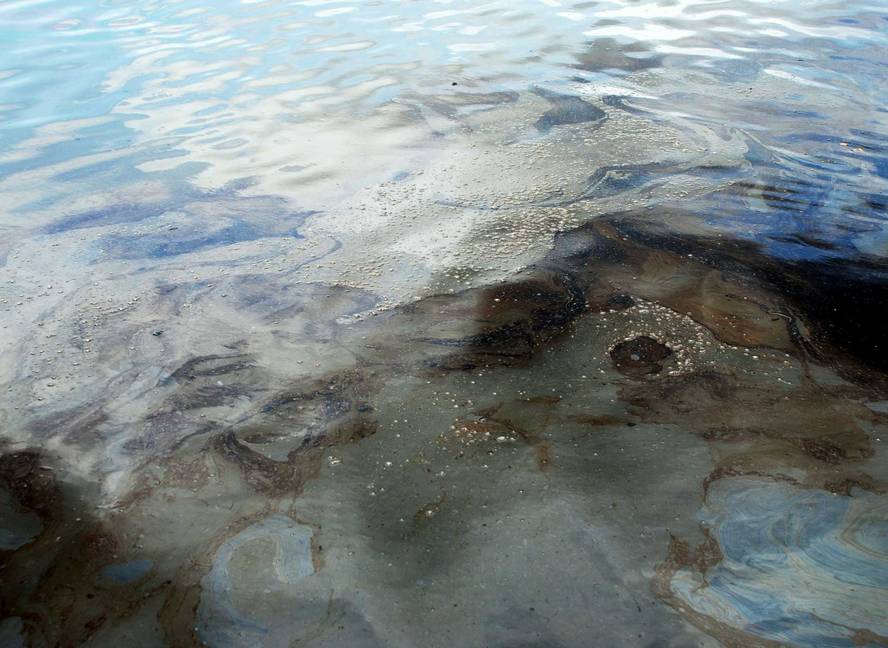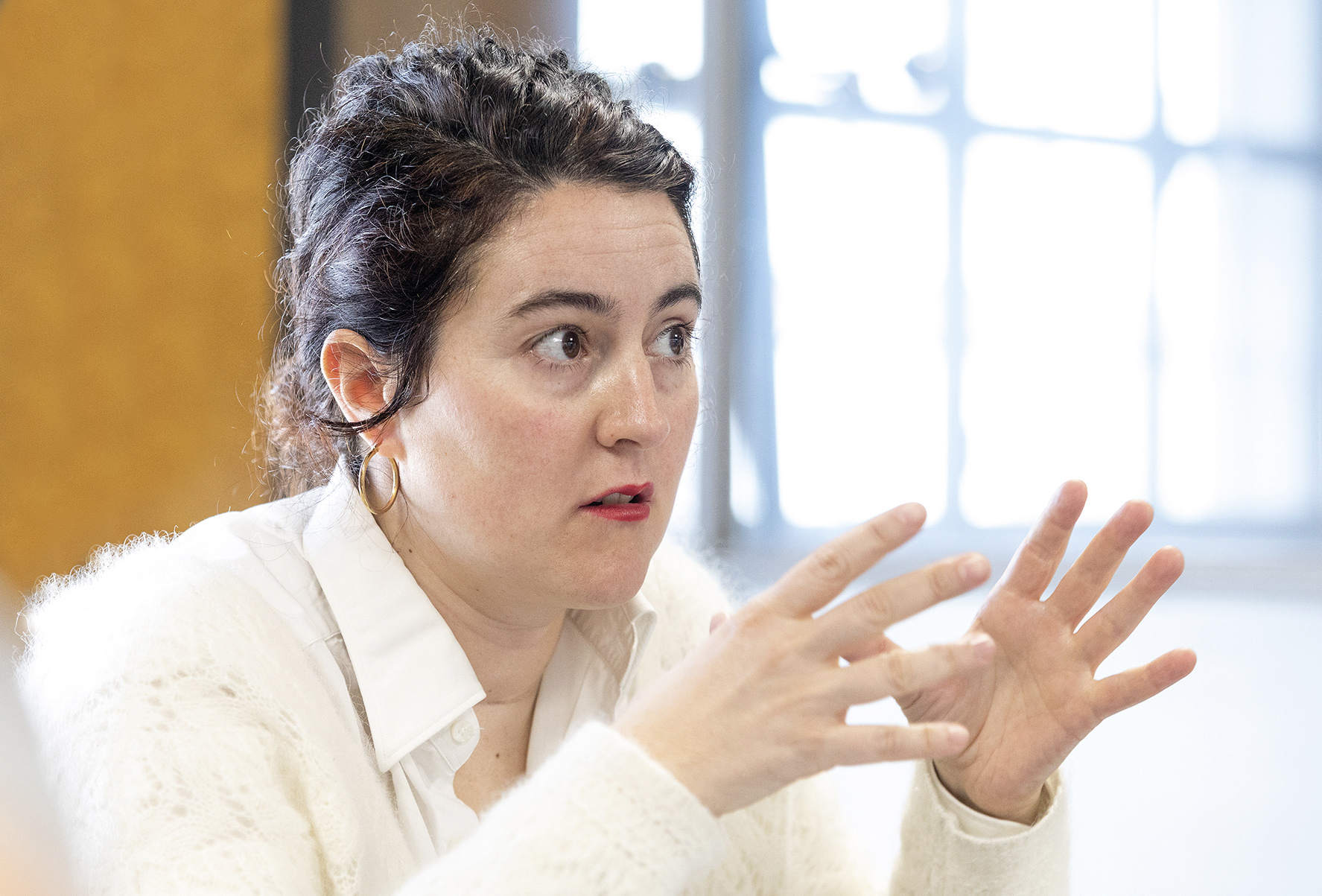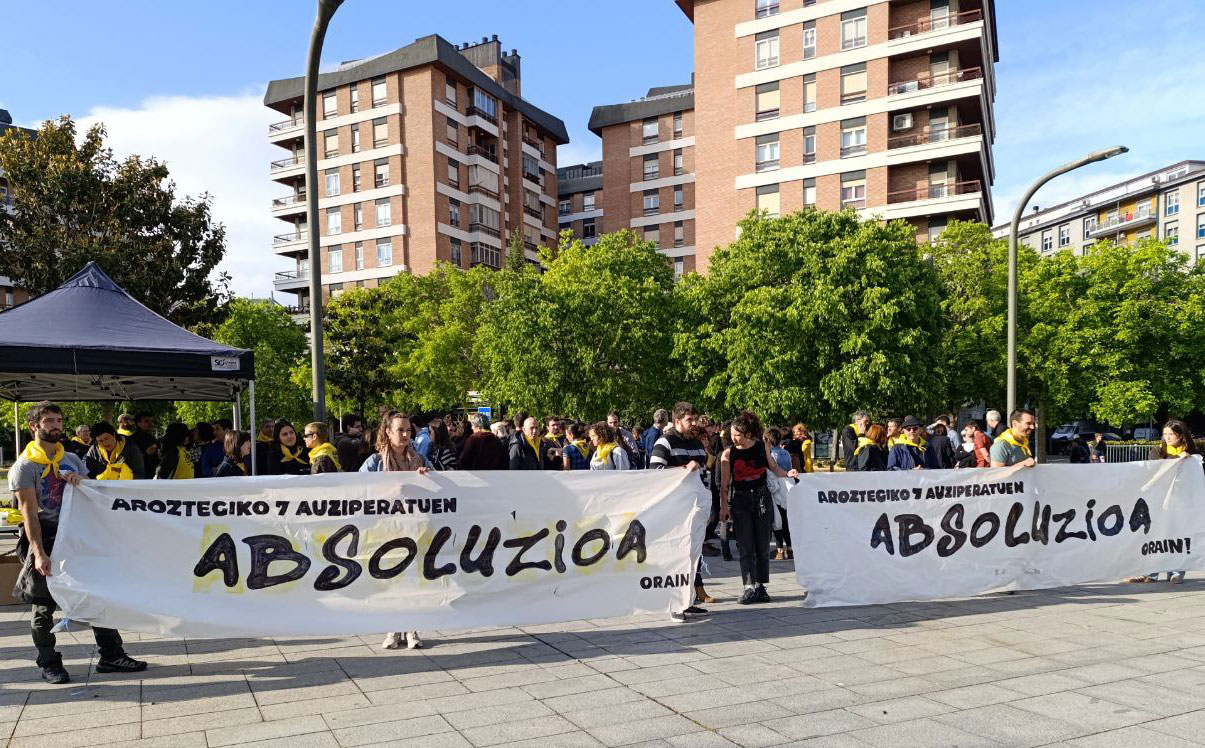Society
Environment
Politics
Economy
Culture
Basque language
Feminism
Education
International
Opinion
sunday 25 may 2025
Automatically translated from Basque, translation may contain errors. More information here. 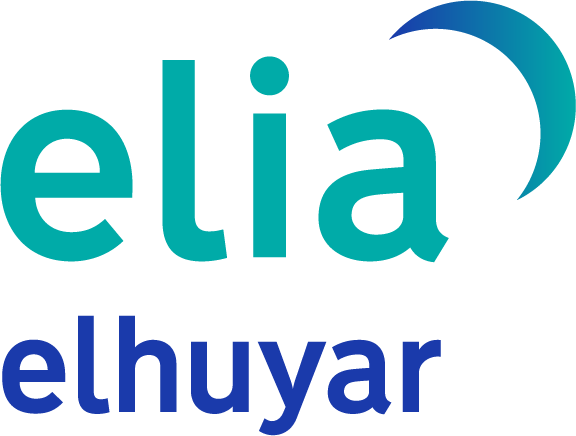
A vicious cycle without end
- The clenbuterol found in Alberto Contador’s urine has slapped the credibility of the already hit bike. Since 1998, anti-doping organisations have not experienced a decline.
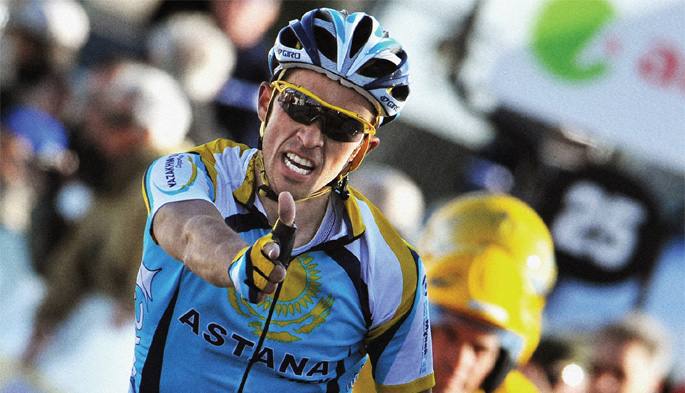
Alberto Contador txirrindulari espainiarra.www.scienceinsport.com.au
In this year’s edition of the Tour de France, the organizers analyzed 664 blood and urine samples from 198 cyclists, approximately three per head of analysis; more to the winning stages and team leaders. As stated in the official jargon, only one “adverse analysis” was detected. This suspicious exception, however, is Alberto Contador, a Spanish cyclist who has won the most prestigious race of the season for the third time. For the eleventh time, the little credibility that remained of the cyclism had been shattered again.
Last September, the TV channel TVE sent a journalist to the Vuelta a España to keep track of doping news for three weeks. “How far will we go?” We know to whom the question of the international judge and race organizer who wants to keep his name hidden is addressed. “Don’t you think the media has a lot to say? Sports results are hardly mentioned, and doping cases are always ready to spread to the four winds.” If he has asked us not to put his name, it is not because he will tell us the painful secrets that will shake the pillars of cyclism, but because he is “fed up”: “I don’t want to see my name next to the word doping, I’m aspered.” We have not insisted too much, because it is not our intention to confuse the margins, but to give a few brushstrokes to know how cycling has reached the state it is in, to explain which institutions are behind the acronyms of the news splattered by doping, leaving behind on the side of the road data and hypotheses that we cannot verify, rumors and unproven accusations. As ETB journalist Xabier Usabiaga explains, understanding the structure of the network is not as difficult as we thought.
The Alberto Contador case has boldly expanded the name of the anabolic that can be used to feed animals – which is banned in Europe. On the second day of rest of the Tour de France, on July 21, Contador was subjected to chalk tests in one of the anti-doping controls that have become commonplace. There were two suspicious substances in his urine: 5 picograms (0.000000000005 grams) of clenbuterol and diphthalate, a non-prohibited substance contained in plastic bags for storing blood. These bags, however, are commonly used in illegal blood self-transfusions.
Contador’s urine is being studied by scientists from the International Cycling Union (UCI) and the International Anti-Doping Agency (WADA-AMA). They will say whether the substances found are sufficient evidence to initiate the punitive process or not. If the answer is yes, Contador will be sanctioned by the Spanish Cycling Federation (RFEC), unless it considers it appropriate. However, if they do not comply with the decision taken by the Federation, the AMA, the UCI and the Contador itself may appeal to the Court for the Prosecution of Sport (TAS-CAS) (see table on the next page). At the time of closing this report, there was still no news.
We must go back twelve years, to 1998, to know the facts that marked the starting point of the current anti-doping crusade.
There was only one day left to start the tour. On the Franco-Belgian border, apparently out of order, the police left Willy Woet, the masseuse of the Festina group. In the car he was carrying 200 ampoules of EPO, growth hormones and dozens of boxes of testosterone. The substance called EPO, or erythropoietin, was still an undetectable product: it artificially produces red blood cells in the blood to improve their oxygenation and improve their performance and recovery. During the interrogation, Woet involved senior Festina Group officials in the matter. The sports director, Bruno Rousell, acknowledged that the cyclists of his team were doping and left the Tours out of the race. Of those questioned by the police, almost all of them corroborated the director’s version.
Not just interrogating. The gendarmes arrested several cyclists, doctors, masseurs and directors, searched buses and hotels, spied on all their movements... and not only those of Festina. They started pulling the thread and found that members of other groups were also muddy.
In protest, driven by the suffocating harassment and excessive dissuasive measures of the gendarmes, all the Spanish teams competing in the Tour (ONCE, Banesto, Kelme and Vitalicio) and the Italians Riso Scotti and Saeco left the race after sterile discussions between organizers, judges, team directors and cyclists. The spokesperson for the cyclists was Bjarne Riis, director of the team that just signed Contador (Saxo Bank). The Danish woman did not join the protests, but three years ago she confessed to being doped between 1993 and 1998. On the other hand, what convinced the Spanish teams to leave the race was the director of ONCE, Manolo Saiz, one of the people involved in Operation Port 2006.
What happened in 1998 highlighted the need for stricter anti-EPO and anti-doping controls in general, in response to which the International Anti-Doping Agency (WADA-AMA) was created a year later. But there's more. As the race organizer we interviewed told us, the Festina case revealed a lack of unity that can still be perceived among cyclists: “The Cyclists lost the fight in 1998.” Since then, every time he’s made a mockery to raise his head, the cyclist has received the coconut of a scandal. Probably the most famous was Operation Port.
On May 22, 2006, Manolo Saiz was arrested by the Civil Guard in Madrid when he left a coffee shop. When he was intercepted, the head of the Liberty Seguros group, who had taken over the ONCE, carried 60,000 euros in a suitcase and an isothermal bag full of prohibited substances. He was released the next day after confessing that he and some of the cyclists under his command were clients of the doctor Eufemiano Fuentes. Dozens of athletes from different disciplines are involved in this huge doping network. We say “they are” because the operation is not yet closed. Some of them, even though they have suffered damage, have withdrawn without being found guilty. The cyclists Unai and Aitor Osa and Joseba Beloki, for example, were identified by the Civil Guard as customers of the Fuentes network, but were not sanctioned by the Spanish Justice: Judge Antonio Serrano focused his investigation on an alleged crime against public health. He did not investigate the doping plot because it was not a crime in Spain until November 2006. Determined that there was no crime against public health, the case was closed and the defendants were acquitted; the case was awaited for oral trial. Cyclists could continue to compete normally, not only because they were not charged with any criminal offense, but also because the judge refused to send the evidence (bags of blood, documents, audio and video recordings...) that depended on them to the AMA and the UCI. The damage had already been done: With the disappearance of Liberty and its name tainted, many cyclists of that group did not receive any new offers.
The Biological Passport was launched by the UCI in 2008: in the background, cyclists are subjected to blood and urine tests to monitor the large changes in values that can be explained in their graphs. It is a control mechanism that does not reveal positives – concrete evidence – but rather suspicions that prohibited substances have been taken. Xabier Usabiaga tells us with an example: “Let’s say you go by car, in that pair of Zumaia towards San Sebastian. Zumaia’s radars have not caught you at an excessive speed, but you have arrived in San Sebastián very quickly, in the middle you have done something that has aroused suspicion.” Suspected cyclists, in the form of provisional measures, are disqualified for fifteen days, during which time the case is investigated and conclusions are reached. Two of the first cyclists to denounce their biological passports were the Ermúra Igor Astarlo and the Italian Pietro Caucchioli in 2009. The Astarlo has retired this year as a “suspect” since the UCI has not confirmed its doping. On the other hand, Caucchioli will challenge the biological passport in the TAS. In June last year, it was sanctioned for two years by the Italian Olympic Committee (CONI), based on the results issued by the UCI. He disagrees with the sentence, and the Italian takes his case to the TAS. His decision could jeopardize the usefulness of the biological passport, which was launched just two years ago.
Usabiaga tells us that the link between cycling and doping is “eternal”. The word “tradition” has been used by the international judge: “That connection has existed since the death of Tom Simpson.” The English cyclist died in 1967 climbing the Mont Ventoux in France. This isolated spot showed the doping plot in its cruelty: two kilometers from the top, Simpson staggered and fell to the top, suffering from heart failure. Three bottles of amphetamine were found in his jersey, and some cyclists confessed to having seen him drink brandy at the beginning of the stage.
We asked them why there is no such close connection in other sports: “It’s a matter of philosophy. Footballers have fallen in the middle of the field, suffering from a heart attack, and no one asks questions. What would happen if they were cyclists?” they both replied. “Watch out, I didn’t say there’s doping in football!” Usabiaga explains. The ETB journalist tells us that cycling has a lot to do with physical effort, much bigger than football, and that doping cases have a relationship with it. However, in the recent presentation of the Giro d’Italia 2011, which will have an incredibly tough trajectory, Usabiaga says that doping is not directly related to the difficulty: “Look at athletics, the most positive cases have been reported in the 100-meter race.” In his own words, it is “utopian” to think that all of this has a solution. He says doping has “always existed,” much more so than in the past, because it was “easier to go undercover.” In the past there were not as many checks: analysis of the whole team on the eve of the race, surprise checks in the homes of the cyclists... The international judge agrees: “Cycling is subject to much stricter controls than other sports.” He explains that in most races the controls are carried out by the UCI, because for many organizers “it is too expensive a process”. He greeted us with disappointment: “There are fewer and fewer young cyclists. Put yourself in the shoes of your parents. They constantly watch the news that confuses cycling with doping. It’s also a tough sport. How will they encourage their children to become cyclists?” The question has been left in the air, like the fog called “suspects” or “criminals” that the platoon can’t get rid of: always on top of the head, when to throw hail, soon to wake up from the dream of utopia.
Last September, the TV channel TVE sent a journalist to the Vuelta a España to keep track of doping news for three weeks. “How far will we go?” We know to whom the question of the international judge and race organizer who wants to keep his name hidden is addressed. “Don’t you think the media has a lot to say? Sports results are hardly mentioned, and doping cases are always ready to spread to the four winds.” If he has asked us not to put his name, it is not because he will tell us the painful secrets that will shake the pillars of cyclism, but because he is “fed up”: “I don’t want to see my name next to the word doping, I’m aspered.” We have not insisted too much, because it is not our intention to confuse the margins, but to give a few brushstrokes to know how cycling has reached the state it is in, to explain which institutions are behind the acronyms of the news splattered by doping, leaving behind on the side of the road data and hypotheses that we cannot verify, rumors and unproven accusations. As ETB journalist Xabier Usabiaga explains, understanding the structure of the network is not as difficult as we thought.
Clenbuterol (2010)
The Alberto Contador case has boldly expanded the name of the anabolic that can be used to feed animals – which is banned in Europe. On the second day of rest of the Tour de France, on July 21, Contador was subjected to chalk tests in one of the anti-doping controls that have become commonplace. There were two suspicious substances in his urine: 5 picograms (0.000000000005 grams) of clenbuterol and diphthalate, a non-prohibited substance contained in plastic bags for storing blood. These bags, however, are commonly used in illegal blood self-transfusions.
Contador’s urine is being studied by scientists from the International Cycling Union (UCI) and the International Anti-Doping Agency (WADA-AMA). They will say whether the substances found are sufficient evidence to initiate the punitive process or not. If the answer is yes, Contador will be sanctioned by the Spanish Cycling Federation (RFEC), unless it considers it appropriate. However, if they do not comply with the decision taken by the Federation, the AMA, the UCI and the Contador itself may appeal to the Court for the Prosecution of Sport (TAS-CAS) (see table on the next page). At the time of closing this report, there was still no news.
The Festina case (1998)
We must go back twelve years, to 1998, to know the facts that marked the starting point of the current anti-doping crusade.
There was only one day left to start the tour. On the Franco-Belgian border, apparently out of order, the police left Willy Woet, the masseuse of the Festina group. In the car he was carrying 200 ampoules of EPO, growth hormones and dozens of boxes of testosterone. The substance called EPO, or erythropoietin, was still an undetectable product: it artificially produces red blood cells in the blood to improve their oxygenation and improve their performance and recovery. During the interrogation, Woet involved senior Festina Group officials in the matter. The sports director, Bruno Rousell, acknowledged that the cyclists of his team were doping and left the Tours out of the race. Of those questioned by the police, almost all of them corroborated the director’s version.
Not just interrogating. The gendarmes arrested several cyclists, doctors, masseurs and directors, searched buses and hotels, spied on all their movements... and not only those of Festina. They started pulling the thread and found that members of other groups were also muddy.
In protest, driven by the suffocating harassment and excessive dissuasive measures of the gendarmes, all the Spanish teams competing in the Tour (ONCE, Banesto, Kelme and Vitalicio) and the Italians Riso Scotti and Saeco left the race after sterile discussions between organizers, judges, team directors and cyclists. The spokesperson for the cyclists was Bjarne Riis, director of the team that just signed Contador (Saxo Bank). The Danish woman did not join the protests, but three years ago she confessed to being doped between 1993 and 1998. On the other hand, what convinced the Spanish teams to leave the race was the director of ONCE, Manolo Saiz, one of the people involved in Operation Port 2006.
What happened in 1998 highlighted the need for stricter anti-EPO and anti-doping controls in general, in response to which the International Anti-Doping Agency (WADA-AMA) was created a year later. But there's more. As the race organizer we interviewed told us, the Festina case revealed a lack of unity that can still be perceived among cyclists: “The Cyclists lost the fight in 1998.” Since then, every time he’s made a mockery to raise his head, the cyclist has received the coconut of a scandal. Probably the most famous was Operation Port.
Operation Port (2006)
On May 22, 2006, Manolo Saiz was arrested by the Civil Guard in Madrid when he left a coffee shop. When he was intercepted, the head of the Liberty Seguros group, who had taken over the ONCE, carried 60,000 euros in a suitcase and an isothermal bag full of prohibited substances. He was released the next day after confessing that he and some of the cyclists under his command were clients of the doctor Eufemiano Fuentes. Dozens of athletes from different disciplines are involved in this huge doping network. We say “they are” because the operation is not yet closed. Some of them, even though they have suffered damage, have withdrawn without being found guilty. The cyclists Unai and Aitor Osa and Joseba Beloki, for example, were identified by the Civil Guard as customers of the Fuentes network, but were not sanctioned by the Spanish Justice: Judge Antonio Serrano focused his investigation on an alleged crime against public health. He did not investigate the doping plot because it was not a crime in Spain until November 2006. Determined that there was no crime against public health, the case was closed and the defendants were acquitted; the case was awaited for oral trial. Cyclists could continue to compete normally, not only because they were not charged with any criminal offense, but also because the judge refused to send the evidence (bags of blood, documents, audio and video recordings...) that depended on them to the AMA and the UCI. The damage had already been done: With the disappearance of Liberty and its name tainted, many cyclists of that group did not receive any new offers.
Biological Passport (2008)
The Biological Passport was launched by the UCI in 2008: in the background, cyclists are subjected to blood and urine tests to monitor the large changes in values that can be explained in their graphs. It is a control mechanism that does not reveal positives – concrete evidence – but rather suspicions that prohibited substances have been taken. Xabier Usabiaga tells us with an example: “Let’s say you go by car, in that pair of Zumaia towards San Sebastian. Zumaia’s radars have not caught you at an excessive speed, but you have arrived in San Sebastián very quickly, in the middle you have done something that has aroused suspicion.” Suspected cyclists, in the form of provisional measures, are disqualified for fifteen days, during which time the case is investigated and conclusions are reached. Two of the first cyclists to denounce their biological passports were the Ermúra Igor Astarlo and the Italian Pietro Caucchioli in 2009. The Astarlo has retired this year as a “suspect” since the UCI has not confirmed its doping. On the other hand, Caucchioli will challenge the biological passport in the TAS. In June last year, it was sanctioned for two years by the Italian Olympic Committee (CONI), based on the results issued by the UCI. He disagrees with the sentence, and the Italian takes his case to the TAS. His decision could jeopardize the usefulness of the biological passport, which was launched just two years ago.
Tom Simpson (1967)
Usabiaga tells us that the link between cycling and doping is “eternal”. The word “tradition” has been used by the international judge: “That connection has existed since the death of Tom Simpson.” The English cyclist died in 1967 climbing the Mont Ventoux in France. This isolated spot showed the doping plot in its cruelty: two kilometers from the top, Simpson staggered and fell to the top, suffering from heart failure. Three bottles of amphetamine were found in his jersey, and some cyclists confessed to having seen him drink brandy at the beginning of the stage.
We asked them why there is no such close connection in other sports: “It’s a matter of philosophy. Footballers have fallen in the middle of the field, suffering from a heart attack, and no one asks questions. What would happen if they were cyclists?” they both replied. “Watch out, I didn’t say there’s doping in football!” Usabiaga explains. The ETB journalist tells us that cycling has a lot to do with physical effort, much bigger than football, and that doping cases have a relationship with it. However, in the recent presentation of the Giro d’Italia 2011, which will have an incredibly tough trajectory, Usabiaga says that doping is not directly related to the difficulty: “Look at athletics, the most positive cases have been reported in the 100-meter race.” In his own words, it is “utopian” to think that all of this has a solution. He says doping has “always existed,” much more so than in the past, because it was “easier to go undercover.” In the past there were not as many checks: analysis of the whole team on the eve of the race, surprise checks in the homes of the cyclists... The international judge agrees: “Cycling is subject to much stricter controls than other sports.” He explains that in most races the controls are carried out by the UCI, because for many organizers “it is too expensive a process”. He greeted us with disappointment: “There are fewer and fewer young cyclists. Put yourself in the shoes of your parents. They constantly watch the news that confuses cycling with doping. It’s also a tough sport. How will they encourage their children to become cyclists?” The question has been left in the air, like the fog called “suspects” or “criminals” that the platoon can’t get rid of: always on top of the head, when to throw hail, soon to wake up from the dream of utopia.
Contador auzia. Erakunde bakoitzaren egitekoa
Organo gorena TAS da, eta haren azpian daude gainerako guztiak, UCI eta AMA batetik, eta herrialde bakoitzeko erakundeak bestetik: federazioak, komite olinpikoak…
Kirola Epaitzeko Auzitegia (TAS): Contador ez du organo judizial batek epaituko. Kirol munduko ika-mikak, bide penaletik doazenak salbu, justizia arruntetik at geratzen dira. Bide propio horretan, kirol diziplina edozein izanik ere, mailarik altuenean TAS dago. Nazioz gaindiko erakunde autonomo eta independentea da.
l Nazioarteko Txirrindularitza Batasuna (UCI): Hark jakinarazi dizkio Contadorri Tourrean egindako analisien emaitzak. Espediente zigortzailea irekitzea dagokio, Espainiako Txirrindularitza Federazioaren (RFEC) esku uzteko.
l Dopinaren Aurkako Nazioarteko Agentzia (WADA-AMA): Fundazio independente gisa sortua, edozein prozesu zigortzailek Dopinaren aurkako Nazioarteko Kodea betetzen duela bermatu behar du. Nazioarteko Batzorde Olinpikoak (COI) eta hainbat gobernuk finantzatzen dute AMA. Contador auzia nahasi egin da, beste arrazoi batzuen artean, UCI eta AMAren arteko tentsioengatik. Txirrindulari batzuen “lagun” izatea leporatu dio maiz AMAk UCIri, “positiboak ezkutatzea” eta “profesionalki” ez jokatzea.
l Espainiako Txirrindularitza Federazioa (RFEC): Espainiako Estatuko txirrindulariak zigortu ditzakeen aurreneko instantzia da, nahiz eta haren erabakia beste instantzia batzuetan (TASen, adibidez) errekurritu ahal izango duten, egoki ikusiz gero, UCIk, AMAk eta Contadorrek berak.
Kirola Epaitzeko Auzitegia (TAS): Contador ez du organo judizial batek epaituko. Kirol munduko ika-mikak, bide penaletik doazenak salbu, justizia arruntetik at geratzen dira. Bide propio horretan, kirol diziplina edozein izanik ere, mailarik altuenean TAS dago. Nazioz gaindiko erakunde autonomo eta independentea da.
l Nazioarteko Txirrindularitza Batasuna (UCI): Hark jakinarazi dizkio Contadorri Tourrean egindako analisien emaitzak. Espediente zigortzailea irekitzea dagokio, Espainiako Txirrindularitza Federazioaren (RFEC) esku uzteko.
l Dopinaren Aurkako Nazioarteko Agentzia (WADA-AMA): Fundazio independente gisa sortua, edozein prozesu zigortzailek Dopinaren aurkako Nazioarteko Kodea betetzen duela bermatu behar du. Nazioarteko Batzorde Olinpikoak (COI) eta hainbat gobernuk finantzatzen dute AMA. Contador auzia nahasi egin da, beste arrazoi batzuen artean, UCI eta AMAren arteko tentsioengatik. Txirrindulari batzuen “lagun” izatea leporatu dio maiz AMAk UCIri, “positiboak ezkutatzea” eta “profesionalki” ez jokatzea.
l Espainiako Txirrindularitza Federazioa (RFEC): Espainiako Estatuko txirrindulariak zigortu ditzakeen aurreneko instantzia da, nahiz eta haren erabakia beste instantzia batzuetan (TASen, adibidez) errekurritu ahal izango duten, egoki ikusiz gero, UCIk, AMAk eta Contadorrek berak.
Dopinaren Aurkako Euskal Agentzia
Duela urtebete, Euskadiko Justizia Auzitegi Gorenak ebatzi zuen Eusko Jaurlaritzak ez duela eskumenik kirolari federatuei (profesional zein afizionatuei) dopinaren aurkako kontrolak egiteko, ezta positibo ematen dutenak zigortzeko ere: Kirola Jaurlaritzari dagokion saila da, baina diziplina-neurriak kirol federazioen jurisdikziokoak dira. Justizia Auzitegiaren erabakia “gainditzeko”,
Jaurlaritzak dopinaren arkako programa bat adostu du kirol federazioekin. Proposamenak aurrera egiten badu, administrazio publikoak kontrolak finantzatuko ditu (bakoitzak 300 euro inguru balio du), eta zigorrak kirol-erakundeek ezarriko dituzte. Blanca Urgell Kultura sailburuak –Kirol Saila haren menpe dago– adierazi du lege proiektua legegintzaldia amaitu aurretik onartzea dutela helburu. Dopinaren Aurkako Euskal Agentziaren enbrioi gisa definitu dute egitasmoa.
Jaurlaritzak dopinaren arkako programa bat adostu du kirol federazioekin. Proposamenak aurrera egiten badu, administrazio publikoak kontrolak finantzatuko ditu (bakoitzak 300 euro inguru balio du), eta zigorrak kirol-erakundeek ezarriko dituzte. Blanca Urgell Kultura sailburuak –Kirol Saila haren menpe dago– adierazi du lege proiektua legegintzaldia amaitu aurretik onartzea dutela helburu. Dopinaren Aurkako Euskal Agentziaren enbrioi gisa definitu dute egitasmoa.
Most read
Using Matomo
#1
#2
#3
Xabier Letona Biteri
#4
Nagore Irazustabarrena Uranga
Newest
2025-05-23
Xabier Letona Biteri
Chronicle of the Carpentry Trial (Day Five)
Without evidence, a harsh demand for punishment on the defendants
The Prosecutor and the Private Prosecution have confirmed the criminal charges against the seven defendants, who are sentenced to 46 months in prison and 56,000 euros in compensation for damages to the companies. The defendants’ lawyers have asked for their acquittal. The... [+]
2025-05-23
Maria Ortega Zubiate
Spanish government approves the largest photovoltaic power plant in Álava
231,000 panels will be installed across 100 hectares in the southwest of Álava: In Armiñón. EUskal will be the second largest solar park in the village.
2025-05-23
Gedar
New attempt to ban political prisoners in Spain
The PP has also proposed in the Senate to increase blackmail so that Basque political prisoners have to show remorse.
2025-05-23
ARGIA
The company that has signed Arantxa Tapia will design the government’s €1 billion investment
On May 22, the Basque Parliament approved a bill to indebt one billion euros to “influence science, technology, business and the industrial sector”. The media outlet Nago reported that the Basque Government has asked KPMG Asesores SL to develop the plan, which recently hired... [+]
2025-05-23
Irutxuloko Hitza
San Sebastian’s Stop Dismissal denounces the “fraud” of temporary rental contracts
A tenant from the Old Town of San Sebastian has managed to convert the rental contract for 11 months into a legal contract for five years.
2025-05-23
Maria Ortega Zubiate
Netanyahu Says ‘Palestine Liberated’ Today’s ‘Heil Hitler’
Netanyahu made statements after two employees of the Israeli embassy in Washington were shot dead. The Israeli Government has directly linked the Washington attacks to the statements of several European heads of Government against the massacre in Gaza.
2025-05-23
Jenofa Berhokoirigoin
French Education Minister Urged by Northern Basque Country Parliamentarians to Empower Seaska’s Resources
On 21 May, a letter was sent to the French Minister of Education, Elisabeth Borne, by the six parliamentarians of the Northern Basque Country. In view of the number of students there, the letter deplores the fact that the positions planned for the schools are "far too few".
2025-05-23
Elhuyar
Few companies in the global North are primarily responsible for conflicts related to the extraction of natural resources
Only one hundred multinational companies are behind 20% of all conflicts related to the extraction of natural resources, according to a study carried out by the Autonomous University of Barcelona. Research has shown that companies in countries in the global North are aware of... [+]
2025-05-23
Olaia L. Garaialde
"If we learn to eat with many rules, we may not notice the needs of the body"
The psychopedagogue Mireia Centeno Gutiérrez has given some clues about the feeding of children, such as the consequences of forcing them to eat and banning food.
2025-05-22
Xabier Letona Biteri
The defendants say that by group decision, everything was done peacefully.
The defendants testified on Thursday, and their statements could be summarized as follows: The citizens who gathered in the square of legumes or in the camping area decided collectively what to do, in general, to go to the field of the works and put them passively in... [+]
Eguneraketa berriak daude









